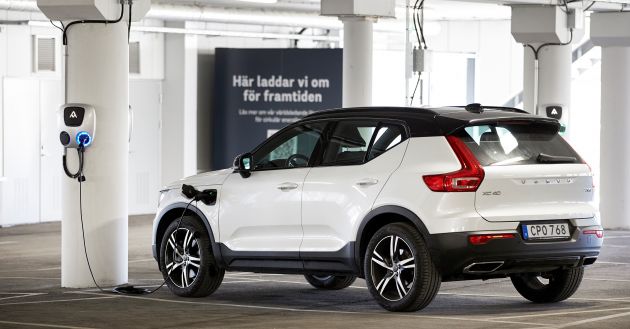Volvo Cars is aiming for a reduction of 2.5 million tonnes of carbon emissions and annual savings of SEK 1 billion (RM494.7 million) from 2025, the Swedish automaker announced. To that end, Volvo will create closed material loops for emissions-heavy materials such as steel and aluminium, as well as through the remanufacturing, repair, reuse and refurbishment of parts, it said.
In its aim to become what it calls a circular business by 2040, every part in Volvo cars needs to be designed, developed and manufactured with reuse in mind, either by Volvo itself or by its suppliers, said the automaker.
It aims to optimise the use of materials and components and in the process, eliminate waste by focusing on resource efficiency and retaining the value created in materials and components for as long as possible through the lifecycle. At present, Volvo Cars already remanufactures parts such as engines and gearboxes, among others, in order to make better use of materials and to reduce emissions.
“There are major sustainability benefits of doing this. If you compare a new part with a remanufactured part, you save about 85% of the CO2. There are major benefits in terms of reducing consumption of the virgin material, too,” Volvo Cars head of sustainability Anders Kärrberg told Autocar.
Parts such as brake calipers could be remanufactured three or four times, this way extending their life to 20 years before they are superseded by new designs, Kärrberg told the magazine.
“We’re on the track of doubling the consumption of metals and minerals in the next 40 years, and we’re generating more and more waste. This is simply not sustainable. It’s not just that we’re generating waste materials: we’re also generating a lot of CO2,” Kärrberg said, adding that companies such as Volvo are due for a fundamental change in order to reduce CO2 emissions and comply with the Paris Agreement.
In 2020, Volvo remanufactured around 40,000 parts, saving almost 3,000 tonnes of carbon dioxide in the process, and it aims to more than double its remanufacturing business by 2025. Volvo Cars recycled 95% of its production waste last year, including 176,000 tonnes of steel, in the process avoiding the generation of almost 640,000 tonnes of CO2, said the manufacturer.
“It is very encouraging to see the link being made between circular solutions, business strategy and a reduction in carbon emissions. The circular economy offers companies a framework for viable long-term growth that also benefits society and the environment,” said Joe Murphy, network lead at the Ellen MacArthur Foundation, which Volvo became a member of in 2020.


Volvo Cars is exploring with its suppliers and partners the possibilities of second-life applications for the high-voltage batteries in its cars. One of its partners is BatteryLoop, a company part of the Swedish Stena Recycling Group that re-uses batteries from the automotive industry.
Meanwhile, the Swedish automaker is also engaged in a commercial pilot project with Swedish clean technology company Comsys and European energy firm Fortum.
This aims to increase the flexibility of supply at one of Fortum’s hydropower generation facilities in Sweden, while contributing to a second-life application for EV batteries; here, battery packs from Volvo PHEVs will serve as a stationary energy storage unit that helps to supply ‘fast-balancing’ services to the power system.
Through these projects, Volvo is researching the characteristics of batteries as they age when used in second-life applications, as compared to their original use in cars. These also enable the automaker to gain knowledge of the batteries’ commercial value after being used in cars, and for the identifying of future revenue streams, said Volvo.
The post Volvo aims to reduce 2.5m tonnes in carbon emissions from 2025 through remanufacture, reuse of parts appeared first on Paul Tan's Automotive News.



0 Comments